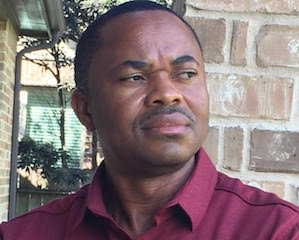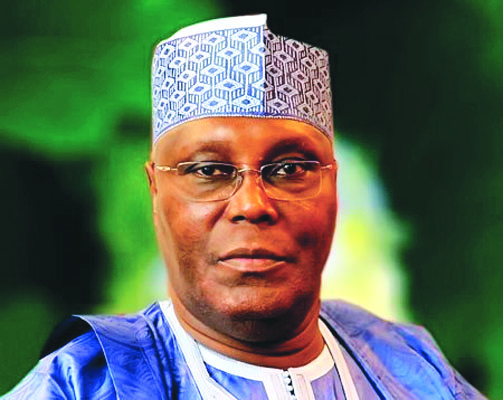The Luminescian Odyssey, by Osmund Agbo
In a realm of awe-inspiring natural diversity, this land unveiled its picturesque tapestry, spanning from lush southern forests to resplendent northern savannahs, pristine western shores, and lake-cradling plateaus. Meandering rivers, life’s vital veins, sustained it, concealing hidden riches below. From dawn to dusk, a vibrant ecosystem teemed with regal creatures and colorful avian symphonies. This allegorical land is Luminescia.
Luminescia, like an eloquent mirror, reflected Earth’s boundless benevolence—a poignant reminder that within nature’s enchanting visage resides inexhaustible potential for both prosperity and ecological opulence.
The very soil beneath its feet cradled the seeds of greatness: petroleum, natural gas, iron ore, bauxite, copper, sapphire, emerald—symbols of a destiny that should have propelled it to the zenith of prosperity. Yet, beyond these riches lay the most vibrant of all resources: the Luminescian people, who conquered the world with their indomitable spirits. However, malevolent forces, more potent than the most devastating of natural calamities, relentlessly pushed Luminescia toward an abyss of irrevocable devastation.
This omnipresent darkness was the shadowy consortium of vested interests, masters of the pay-to-play art form, ensnaring millions of lives within Luminescia’s grasp. Corruption, like a creeping vine, had insidiously woven itself into every facet of Luminescian society, penetrating the highest echelons of authority with a stranglehold so constricting that it threatened the nation’s very soul. Once-filled hearts, brimming with dreams of a brighter tomorrow, now languished in the murky depths of despair.
Luminescia’s elections had devolved into a tragic farce, an affront to democracy itself. Orchestrated by a compromised electoral commission, they became a spectacle where votes were brazenly pilfered, and the voices of the people muted through fear-inducing intimidation and audacious ballot theft. Those who should have been stewards of the nation’s well-being had, instead, metamorphosed into overlords, while the true desires of the people were entombed in a labyrinth of manipulation and deceit. But that was Luminescia for you.
In the revered chambers of justice, where the downtrodden sought solace, a disheartening reality loomed large. The judiciary, once the bastion of hope for equitable justice, had regrettably succumbed to the puppetry of the executive branch. Judges, who were once exemplars of moral rectitude, had been seduced by the allure of illicit wealth, rendering them pliant to bribes and willing to overturn the voice of the people, thereby forsaking their sacred duty.
Luminescia languished beneath the onerous yoke of complete state capture, a dire predicament meticulously engineered by self-serving interests determined to maintain their iron grip on the nation. These malevolent forces exhibited no concern for the welfare of the populace; their singular preoccupation lay in safeguarding their dominion and amassing further riches.
Amidst this somber reality, the common people of Luminescia found themselves teetering on the precipice of desolation. The horizon appeared bereft of even the faintest glimmer of hope, and within the confines of the existing system, avenues for change remained elusive. The reigning powers held the nation’s throat in an unrelenting grip, displaying no willingness to release their hold.
Within the hearts of many, a burgeoning conviction took root, asserting that revolution stood as the sole viable course of action. It was perceived as a desperate recourse, a final gambit forged from the crucible of frustration and an ardent yearning for justice. The citizens of Luminescia were cognizant of the formidable challenges and profound sacrifices that lay ahead, but they also comprehended that the prevailing status quo, typified by stolen elections, compromised judiciary, and the stranglehold of corruption, had become untenable.
The common citizens of Luminescia commenced a collective movement for transformation, transcending the boundaries of ethnicity, religion, and social stratification. They shared a united vision of a Luminescia in which merit, justice, and the rule of law triumphed over nepotism, corruption, and impunity, illuminating the path towards a brighter future.
As the winds of transformation gathered momentum, Luminescia stood poised at a critical juncture, where the destiny of the nation teetered on the precipice, holding the world in rapt anticipation. Would the entrenched forces of corruption maintain their grip, or would the indomitable collective will of the people prove resolute enough to shatter the chains that had ensnared them?
Within the boundaries of Luminescia, the crescendo of discontent swelled with each passing day, as the common man’s unwavering resolve to cast off the shackles of corruption harmonized into a chorus of hope. Amidst the recognition of the formidable challenges ahead, the citizenry comprehended that the path to change was not a choice but an imperative.
The movement for transformation in Luminescia was a tapestry of diverse voices and ideas, all tethered by a shared aspiration for a brighter tomorrow. Individuals from every walk of life, representing myriad regions, faiths, and backgrounds, converged in unison. They recognized that their battle against corruption was, at its core, a struggle for the very soul of their homeland.
As this movement gained momentum, it confronted formidable adversaries—entrenched powers whose longevity had been predicated on corruption. These adversaries employed every stratagem within their arsenal, deploying propaganda, intimidation, and even violence to quash the rising tide of dissent.
Yet, the people of Luminescia possessed a potent weapon of their own: unity in suffering. Their collective resolve emerged as a force to be reckoned with, inspiring global solidarity with their cause. The international community observed Luminescia with a blend of hope and trepidation, aware of the far-reaching implications for democracy and justice worldwide.
In the crucible of mounting pressure, even the compromised electoral commission was compelled to confront its actions. The calls for electoral reform crescendoed, and the demand for transparency became an impassioned rallying cry. The people of Luminescia adamantly insisted that their voices be heard, their votes counted, and their elections conducted with unimpeachable fairness.
Simultaneously, a glimmer of hope surfaced within the judiciary, where a cadre of judges, resolute in their commitment to justice and integrity, began to resist the corrosive influence of the executive branch. They emerged as champions of the rule of law, upholding the constitution and safeguarding the rights of the common man.
The Luminescian struggle was not without its sacrifices. Numerous courageous individuals risked their lives to champion their beliefs, with some making the ultimate sacrifice and becoming martyrs for the cause of justice and democracy. Their unwavering commitment galvanized the movement, infusing it with an unquenchable determination.
As days flowed into weeks and weeks into months, Luminescia found itself at a defining crossroads. The formidable citadels of corruption, though potent, began to waver under the relentless pressure and the unyielding resolve of the populace. The world watched as the nation’s destiny hung in the balance, pondering whether Luminescia would emerge from the crucible of change as a stronger and more just entity than ever before.
The tale of Luminescia transcended its borders, evolving into an allegory not solely for one nation but for the universal battle against corruption and the pursuit of justice. It underscored that the path to a brighter future, though strewn with obstacles, remained navigable when the human spirit united in the pursuit of a noble ideal, demonstrating its remarkable capacity to overcome even the darkest of adversities.
Osmund Agbo is the author of ‘Black Grit, White Knuckles: The Philosophy of Black Renaissance



